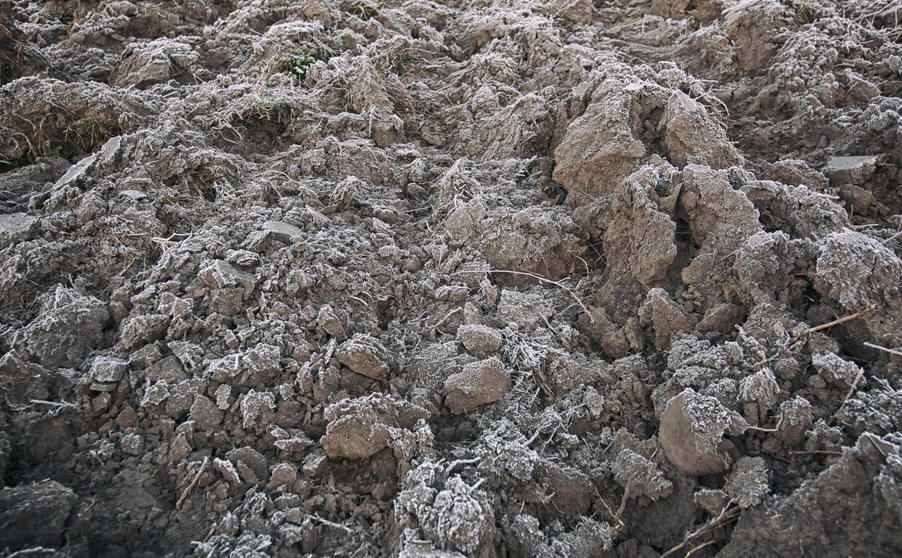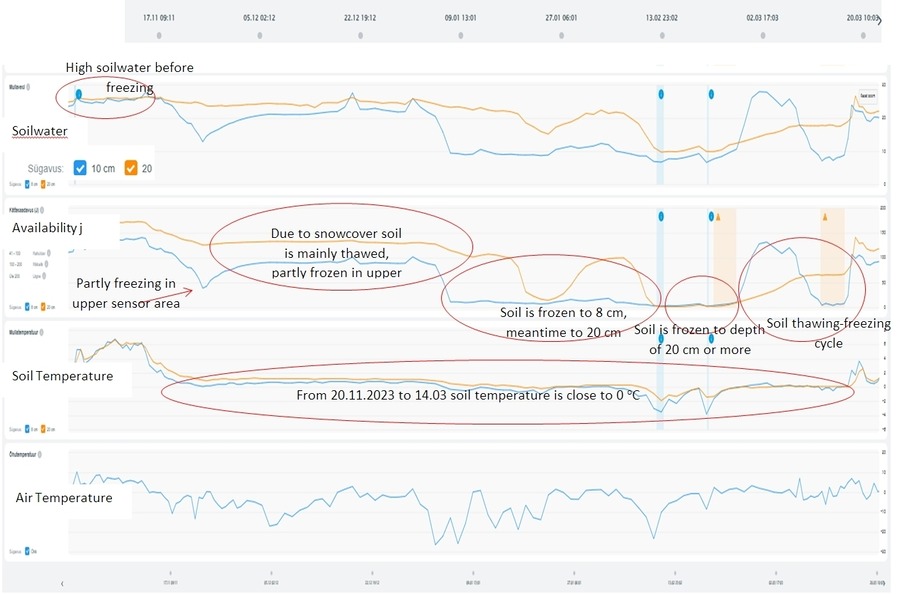
The condition of soils during winter, including freezing-thawing cycles and temperature variations at different depths, plays a critical role in overwintering crops, mechanical damage to roots, the survival of pests and diseases, nutrient retention and leaching, and soil erosion processes.
Key Factors Affecting Soils in Winter Freezing
Several factors influence soil and ground freezing processes, primarily:
- External temperatures
- Presence or absence of snow cover
- Soil texture
- Soil moisture before freezing
Physical Processes During Soil Freezing
The freezing of water is a well-documented physical process. During freezing, the kinetic energy of water molecules decreases to the point where molecular forces overcome their movement, forming a rigid crystalline structure. As water freezes, the average distance between molecules increases, resulting in a lower density of ice compared to liquid water, causing ice to float. This process occurs precisely at 0°C and is a sharp phase transition from a liquid to a solid state. Freezing and melting are highly energy-intensive processes – the latent heat of freezing/melting is 330,000 kJ/kg, compared to the specific heat of water at 4180 J/kg°C. The temperature of ice only begins to drop below 0°C after all the water has frozen.
In soils, the freezing process is more complex because not all the water present is free. Heavier soils with higher clay content have more bound water, and the freezing of this water differs from that of free water. In practice, this means heavier soils freeze more slowly, and some water in all soils remains unfrozen even during winter.
Paul-Tech’s Measurements and Findings
Paul-Tech’s extensive data on soil behavior during winter provides critical insights into soil conditions throughout the season. Our long-term measurements reveal consistent patterns across various soil types. Typically, soils are water-saturated before freezing in autumn, and the freezing of this large volume of water is an energy-intensive process. Due to the high latent heat of freezing, soil water acts as a temperature buffer at around 0°C. In predominantly sub-zero winter regions, several universal trends have been observed:
Temperatures at 8 cm and 20 cm depths remain around 0°C throughout winter, thanks to the buffering effect of water’s high freezing point. This raises questions about the likelihood of pest destruction due to winter frosts.
Numerous freeze-thaw cycles occur during winter, particularly at the 8 cm sensor depth. These cycles do not significantly alter soil temperature but can cause frost heaving, potentially damaging plant roots. During these cycles, water undergoes phase transitions between liquid and solid states.
Soil temperature drops below 0°C only when the soil is extensively frozen. Even in this case, the minimum temperature at the 8 cm sensor without snow cover has been around -4°C.
With snow cover, the soil remains unfrozen, maintaining a temperature of 0–1°C.
Accurate Assessment of Soil Condition
The best indicators of whether soil is frozen or thawed are the availability (j) readings (electrical conductivity directly measured from the soil) and soil water content shown on graphs. These readings also help estimate the proportion of unfrozen water in the soil. Measuring only soil temperature does not provide a full picture of soil conditions. Variations in electrical conductivity and soil water content graphs during winter are due to partial water freezing rather than significant changes in soil moisture or conductivity. The risk of frost heaving (root damage) is higher in heavier soils, soils with higher moisture before freezing, and in areas with more freeze-thaw cycles.
In snow-free soils, the temperature gradient from the surface to an 8 cm depth sensor is linear. For instance, if the air temperature is -10°C, the temperature at 8 cm depth is 0°C, and the soil is mostly frozen, the soil temperature at 4 cm depth would be approximately -4°C.
By leveraging Paul-Tech’s measurements, farmers can better understand soil behavior in winter and make informed decisions for crop management and soil health.
